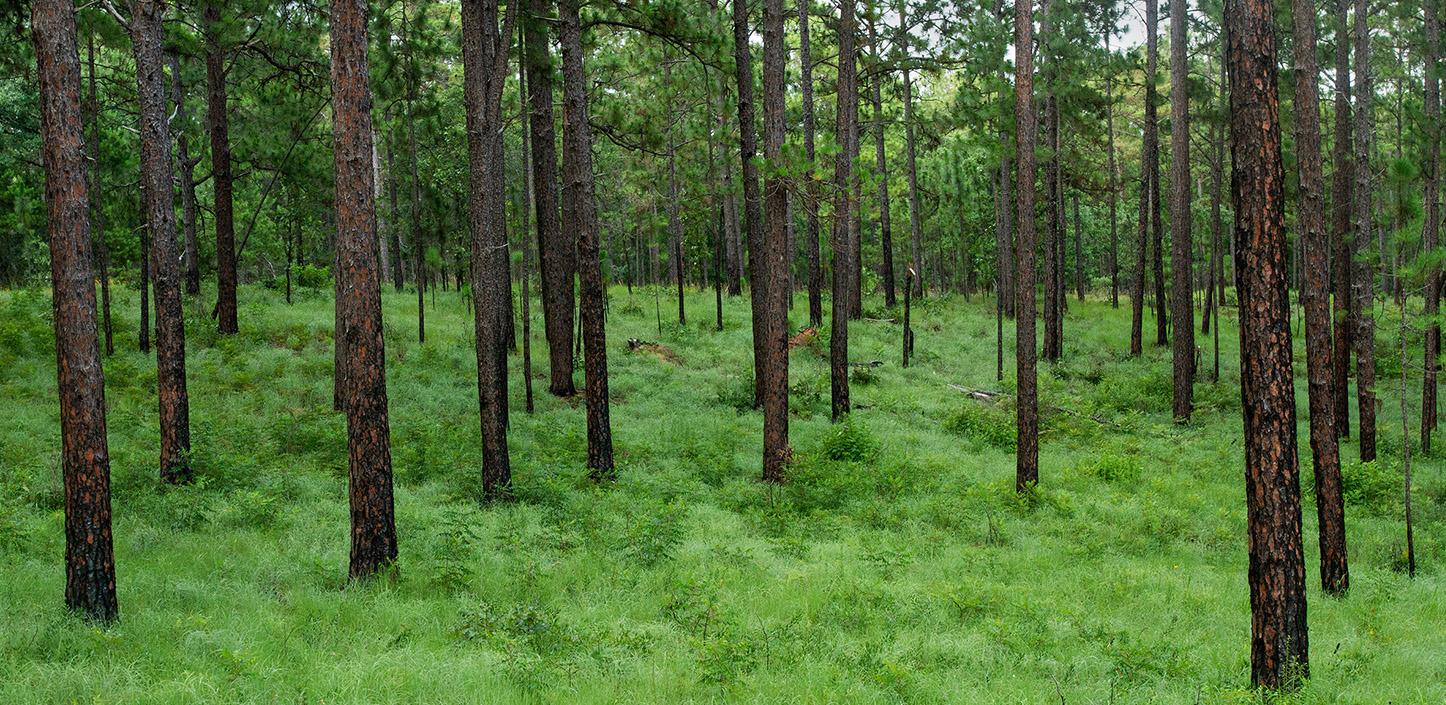
Amazon and NFWF collaborate to restore longleaf pine forests and improve water quality in North Carolina
Forests do more than provide habitat for wildlife. They also play a vital role in filtering water. Healthy forests allow rain to soak into the soil, replenishing groundwater and delivering clean, cool water to streams and rivers. Unfortunately, much of the Pee Dee River Basin, which stretches across the Carolinas, has lost its native longleaf pine forests. Once covering 90 million acres across the Southeast, longleaf pine now occupies less than 5 percent of its historic range.
To reverse this trend, Amazon and NFWF are collaborating to help restore and improve management of longleaf pine forests in North Carolina's Pee Dee River Basin—a critical watershed for communities and wildlife. This initiative is part of Amazon’s broader aim to be a good water steward everywhere it operates, which includes enabling nature-based solutions that work to improve water quality, reduce flood risk and improve long-term water sustainability.
"Investing in the conservation of natural habitats that directly impact the health of our freshwater supply will support a prosperous future for wildlife, communities and our nation’s economy," said Jay Jensen, director of the Southern Regional Office at NFWF. "Forests play a vital role in ensuring abundant, clean sources of fresh water. When forests are healthy, they allow more water to filter into the soil, replenishing groundwater and increasing the amount of clean, cool water reaching streams and rivers."
This project in North Carolina, one of four new water replenishment efforts detailed in a recent Forbes article, supports the NC Sandhills Conservation Partnership’s work to help private landowners to restore and improve longleaf pine forests. For the NFWF project, more than 3,500 acres will be improved through prescribed fire and other forest management practices that enhance wildlife habitat and water conservation. It may be counterintuitive, but controlled burns support healthy longleaf habitat and keep vegetation density low, which in turn means more water is kept in the watershed and not lost to evapotranspiration. A major portion of the grant funds is going to the NC Sandhills Prescribed Burn Association, which offers workshops, field days and mentorship programs to help landowners safely conduct burns and manage forests.
"Prescribed fire is critical to restoring and maintaining healthy longleaf pine forests that benefit wildlife and help conserve and replenish water for communities," said Jesse Wimberley, NC Sandhills Prescribed Burn Association Coordinator. "Here in the North Carolina Sandhills, neighboring landowners want to work together to achieve their conservation goals. We're helping them to do this and implement prescribed burns safely which is improving the health of our forests and building community."
Through training and hands-on learning, this collaboration is expected to help more than 200 private landowners to implement prescribed burns on their properties. By bringing these forests back to health naturally, such as by using prescribed burns to remove competing vegetation, the project aims to help more rainwater soak into the ground and nearby rivers. In times of flood, healthy forests act like sponges and buffer communities from flood impacts.
In total, the project spans 20,000 acres and is expected to replenish 1.6 billion liters of water annually, enough to fill about 640 Olympic-sized swimming pools.
"Healthy forests are nature's original water infrastructure, and this collaboration with NFWF exemplifies how investing in nature-based solutions can address multiple challenges simultaneously," said Will Hewes, Global Water Stewardship Lead at Amazon. "By restoring 20,000 acres of longleaf pine forests in North Carolina's Pee Dee River Basin, we're not only expected to replenish 1.6 billion liters of water annually, but also enhancing biodiversity, improving climate resilience, and supporting local communities. These forests act as natural water towers—capturing rainfall, reducing erosion, and slowly releasing filtered water to streams and aquifers. This project demonstrates how Amazon is working closely with our communities to solve their unique water challenges."
This is one of Amazon's largest nature-based water projects and will help contribute to AWS' commitment to be water positive by 2030. Amazon has announced more than 40 water projects around the world, which Hewes said are expected to return more than 17 billion liters of water to communities every year once every project is completed.

Beyond water benefits, working to restore longleaf pine forests reduces flood risk, improves soil health, and provides critical habitat for threatened and endangered species that depend on longleaf pine ecosystems, including the red-cockaded woodpecker.
To learn more about NFWF's longleaf pine restoration efforts, visit https://www.nfwf.org/programs/longleaf-landscape-stewardship-fund.